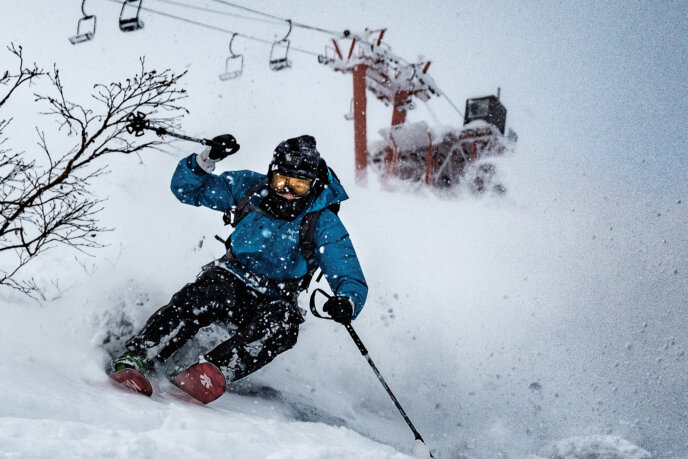Starting From Zero
Learning a new sport can be intimidating, especially one as dynamic and thrilling as skiing.
The beauty of skiing is that you can take it anywhere from cruising on nice, fast groomers to flying down a chute on Mt Yotei. It is a sport that anyone can enjoy, and is probably one of the best ways to experience winter.
The following are some tips I have come to learn on my skiing journey.
Fitness

The best preparations for learning how to ski will be coming to Niseko with ski-ready fitness. The stronger your legs, core, and balance are, the easier it will be to pick up skiing. Even without snow, you can focus on cross training by running, cycling, and working on balance. Get familiar with leg burn, as this is the sensation that comes from the forces of skiing and supporting many times your weight on turns, especially if you progress quickly.
Once you arrive to the slopes with your built up fitness, you will have the added benefit of being able to spend more time on the mountain without fatiguing. This leads to the next step, which is nutrition. Notice, none of these factors involve skiing, which means these are things you can control long before arriving to Niseko.
Nutrition

Eat a calorie dense meal in the hours before skiing, but not too soon before, as the body will be spending energy breaking down heavy proteins, fats and fibers, which can cause sluggishness. By eating calorie dense meals in the hours before riding and hydrating properly throughout the day, you will be better fueled to keep riding hard and progressing. With all the amazing eateries around Niseko, this should not be a problem!
You can also extend your performance by eating and drinking while riding. Lift and gondola rides are good places to top up on snacks high in carbohydrates, as these foods break down quickly to supply glucose to your muscles, which need to be putting out power for extended periods of time. Without glucose, there will not be glycogen, which is the readily available state of energy stored in your muscles and liver. When riding all day (you can ride from 8:30am to 8:30pm at Grand Hirafu when nightskiing is open), you will want to keep topped up on glycogen to avoid the dreaded “bonk” or “wall.” Onigiri (think salmon or tuna wrapped in rice and seaweed) are the perfect balance of carbohydrates and in some cases, a bit of protein, which will break down a bit slower.
Gear

Skier: Michaela Naumovski. Photographer: Nolan Yoshiaki Isozaki
Although learning on any pair of skis will be fine as a beginner (think rentals or used skis), boots are a different story. If you are blessed with the perfect feet for ski boots, count yourself lucky, as most of us have to get custom boots to a certain degree for comfort. Boots that do not send pain into your feet or legs are critical in learning properly and staying out on the slopes for longer. You can consult a boot-fitter back in your home country or one in Niseko, who can make all the adjustments necessary for all-day comfort.
The only other crucial piece of gear would be a good set of goggles that do not fog. Zero visibility is one way to quickly shut down your riding, especially in tree runs and variable snow conditions. Dressing for weather is important, as conditions, especially higher up on the mountain, can vary greatly throughout the day. Layering intelligently will keep you riding more comfortably. Temperatures plummet when the sun sets, so if you are planning on night riding, keep that in mind.
Learning

Taking lessons from qualified professionals can make the learning curve much smaller. They will have experience taking someone from no experience to riding. Learning from friends can be great, but if they are not instructors, they may have a hard time articulating exactly what they mean to say.
Skiing is not inherently as natural and intuitive as say cycling, and a good instructor can help you get to the point where on-snow skills become muscle memory.
After

After a hard day out, be sure to visit some of the many local onsen in the area. Heat therapy can help boost recovery by increasing blood flow and cold baths can help reduce inflammation. Now is also the perfect time to take on a calorie and nutrition dense meal, as your body will need to rebuild through the night as you sleep for the next day of lessons and riding.
Although all these tips can help boost your chances of going from no skiing experience to riding a top to bottom line, the most important tip is to have fun and enjoy yourself! Persistence is key to getting over the learning curve because once you find the joy in skiing, all the leg burning, awkward turns, and falling will be worth it.
--
This article first appeared in the Experience Niseko Winter 2018/19 Magazine. The Summer 2019 Magazine is out now!
